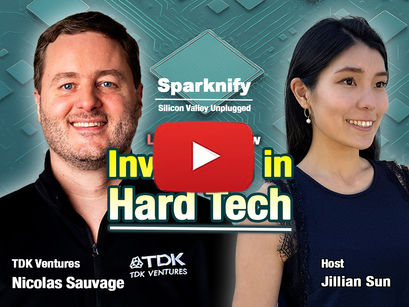Humanity’s Warp Drive? This Startup’s Fusion Rocket Could Be the Real Deal
- Sparknify

- Jun 16, 2025
- 4 min read
As humanity stretches its gaze beyond Earth, one startup in the UK may hold the key to dramatically accelerating our voyage through space. Enter Pulsar Fusion, a Bletchley-based aerospace innovator aiming to revolutionize spaceflight with its Sunbird rocket—powered by the company’s patented Dual Direct Fusion Drive (DDFD).

🚀 Who Are Pulsar Fusion?
Founded in 2011 by entrepreneur Richard Dinan, Pulsar Fusion has steadily evolved from building exotic plasma thrusters into pioneering nuclear-fusion rockets. Early wins include:
Testing Hall-effect satellite thrusters with record exhaust speeds (~20 km/s)
A 2021 demonstration of hybrid polyethylene/nitrous oxide engines for the UK Ministry of Defence .
In 2023, the company unveiled its ambitious Sunbird project: a nuclear fusion-powered rocket tug designed not just for Earth orbit—but for full solar-system traversal.
The Tech: Dual Direct Fusion Drive (DDFD)
At the heart of Sunbird sits Pulsar’s DDFD—a compact reactor fusing deuterium and helium‑3 to produce 1000–1500 km/s exhaust speeds and generate both thrust and 2 MW of onboard power for instruments, communications, and life support systems—long after Earth-bound missions have exhausted solar power .
Crucially, DDFD enables sustained acceleration in space, achieving specific impulses of 10,000–15,000 s—far exceeding chemical rockets. Modeled to propel a 1000 kg vessel to Pluto in four years, it slashes transit times across the solar system dramatically .
Redefining Mars: 30 Days, Not 7 Months
Current chemical rockets require ~11.3 km/s Δv to reach Mars, while Sunbird operating from orbit would handle most of that—leaving payload rockets to simply reach LEO before docking. The result? Mars missions could shrink from 7 months to as little as 30–150 days. Even voyages to Jupiter or asteroid mining missions become realistic within 2–4 years—something unimaginable with conventional propulsion systems .
Dinan himself explains: “Where do you see fusion already? In space — the Sun… doing it in space is actually easier than doing it in the atmosphere” . The absence of atmospheric drag simplifies fusion control, giving Pulsar a significant edge.
Roadmap to Launch
2025: Earth-based static burner tests begin
2027: In‑orbit demonstration (IOD) of core reactor tech
Early 2030s: First operational Sunbird fleet, orbiting as reusable tugs for multiple missions
At ~$70 million per unit, Sunbird is pricey—but its multi-function capability—and rapid reuse cycle—could make it cost-effective in a cargo-dominated space economy .
Real-World Applications
Martian Cargo Delivery: Shuttling 1–2 tons of supplies to Mars orbit in ~150 days, with stable power for critical systems like cold storage and comms systems using DDFD’s 2 MW output .
Asteroid Mining & Deep Space: Sunbird could tow scientific equipment, mining gear, or telescopes to outer solar system destinations.
High-Power Orbit Projects: Its onboard fusion power could enable in-orbit manufacturing, space-based solar arrays, or even spaceship refueling hubs.

A Spark in Sparknify’s “Human vs. AI” Lens
Pulsar’s Sunbird epitomizes technological convergence—melding human ingenuity, nuclear physics, AI for reactor control, and autonomous spacecraft operation. Like Sparknify’s “Human vs. AI” discussions, Sunbird raises profound questions: When machines autonomously navigate the solar system and decide mission-critical actions, what becomes of human agency?
The upcoming Sparknify event, “Drones of the Land, Sea, and Sky”, will extend this dialogue into space by showcasing planetary drones and tugs.
Pulsar’s Sunbird can dock autonomously, execute long-range maneuvers, and manage onboard systems without real-time human control.
Sparknify’s event will explore how such autonomy reframes roles for astronauts and mission planners—echoing themes from drone autonomy on Earth.
Voices from the Field
On future space travel, Dinan stated:
“Where do you see fusion already? In space – the Sun. […] doing it in space is actually easier than doing it in the atmosphere” .
Energy and propulsion experts note that aneutronic fusion (D + He‑3) minimizes harmful radiation, making it safer for sustained deep‑space missions . By harvesting protons rather than neutrons, Sunbird avoids the need for heavy radiation shielding—a major engineering advantage.
Implications for the Future
Astronaut Safety & Mission Speed: Reduced exposure to cosmic radiation and psychological benefits of shorter trips make crewed missions more viable.
Planetary Defense & Mining: Nuclear tugs could quickly deploy emergency missions—whether to deflect asteroids or set up mining operations.
Space Economy Expansion: Faster freight means rapid deployment of space habitats, telescopes, solar power satellites, or fuel depots—forming a robust space infrastructure.
Charting a Human-AI-Fusion Future
At the heart of Sparknify’s philosophy is a vision where humans guide purpose, while machines and autonomy achieve execution at scale. Sunbird exemplifies just that:
Human teams design mission goals, safety protocols, and deployment timelines
The reactor runs autonomously, optimizes performance, and adapts mid-flight
Human oversight remains essential—but is redefined
Pulsar Fusion’s Sunbird is more than a rocket: it’s a turning point. If it achieves orbital fusion by 2027, the resulting technological leap could usher in an age of rapid interplanetary transport, deep space research, and an industrialized presence across the solar system.
But along with excitement comes responsibility: autonomous fusion rockets blur the line between human and machine decision-making. By engaging in forums like Sparknify’s Human vs. AI and their “Drones of the Land, Sea, and Sky” event, we can ensure that the technologies transforming our future are guided by human values and ethical foresight.
Before we colonize Mars, we must first define who we are in a universe where machines unlock the power of the stars.













Comments